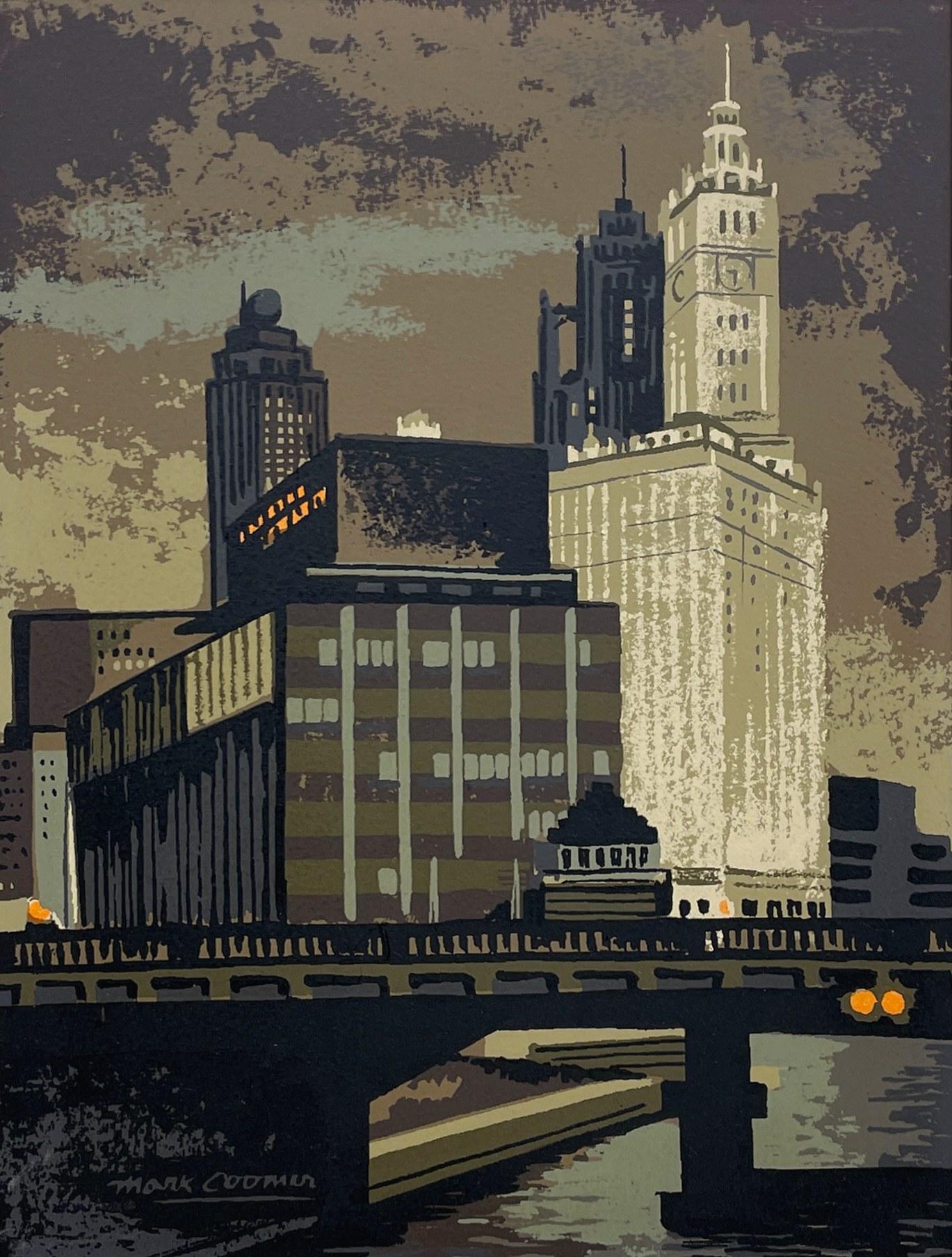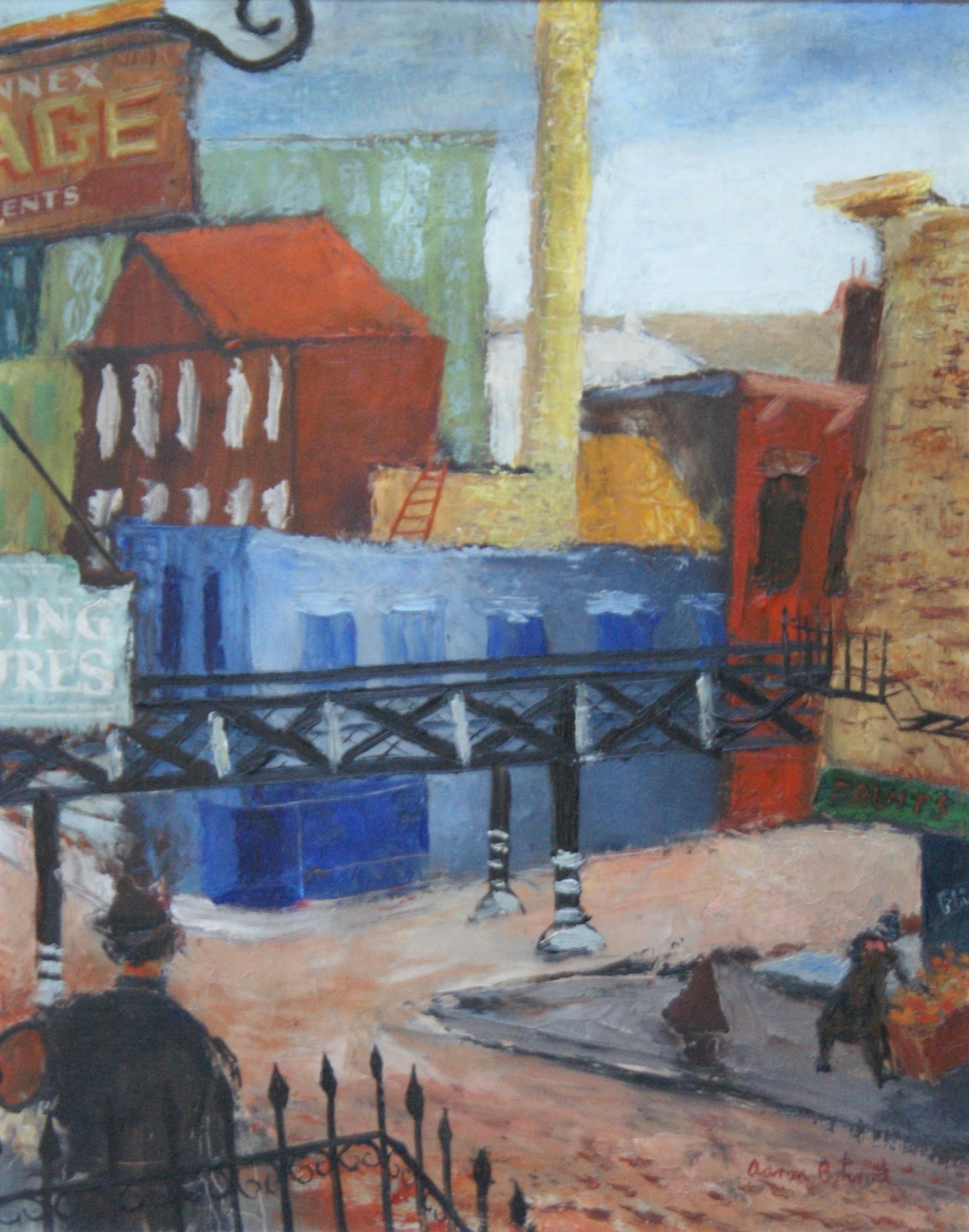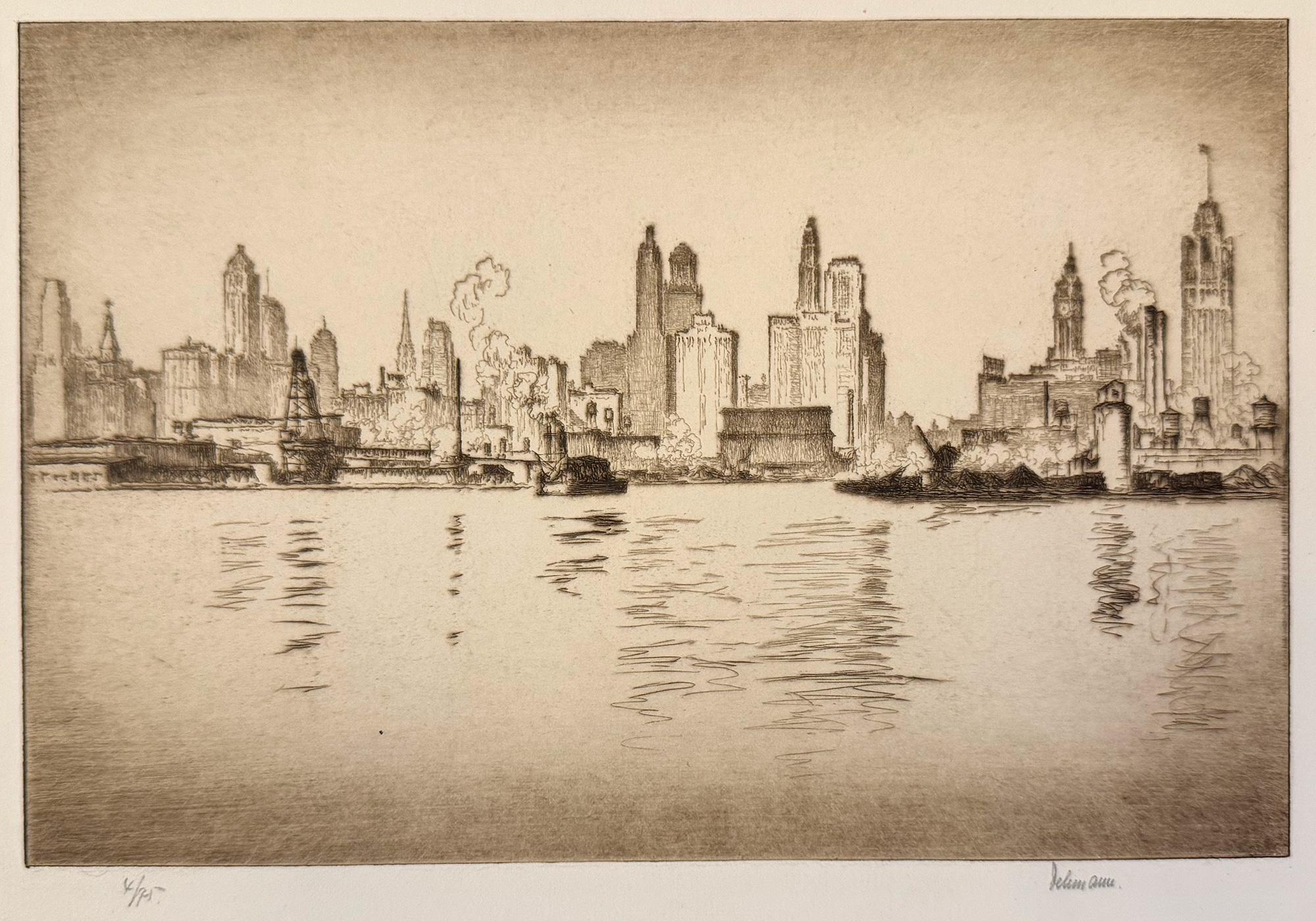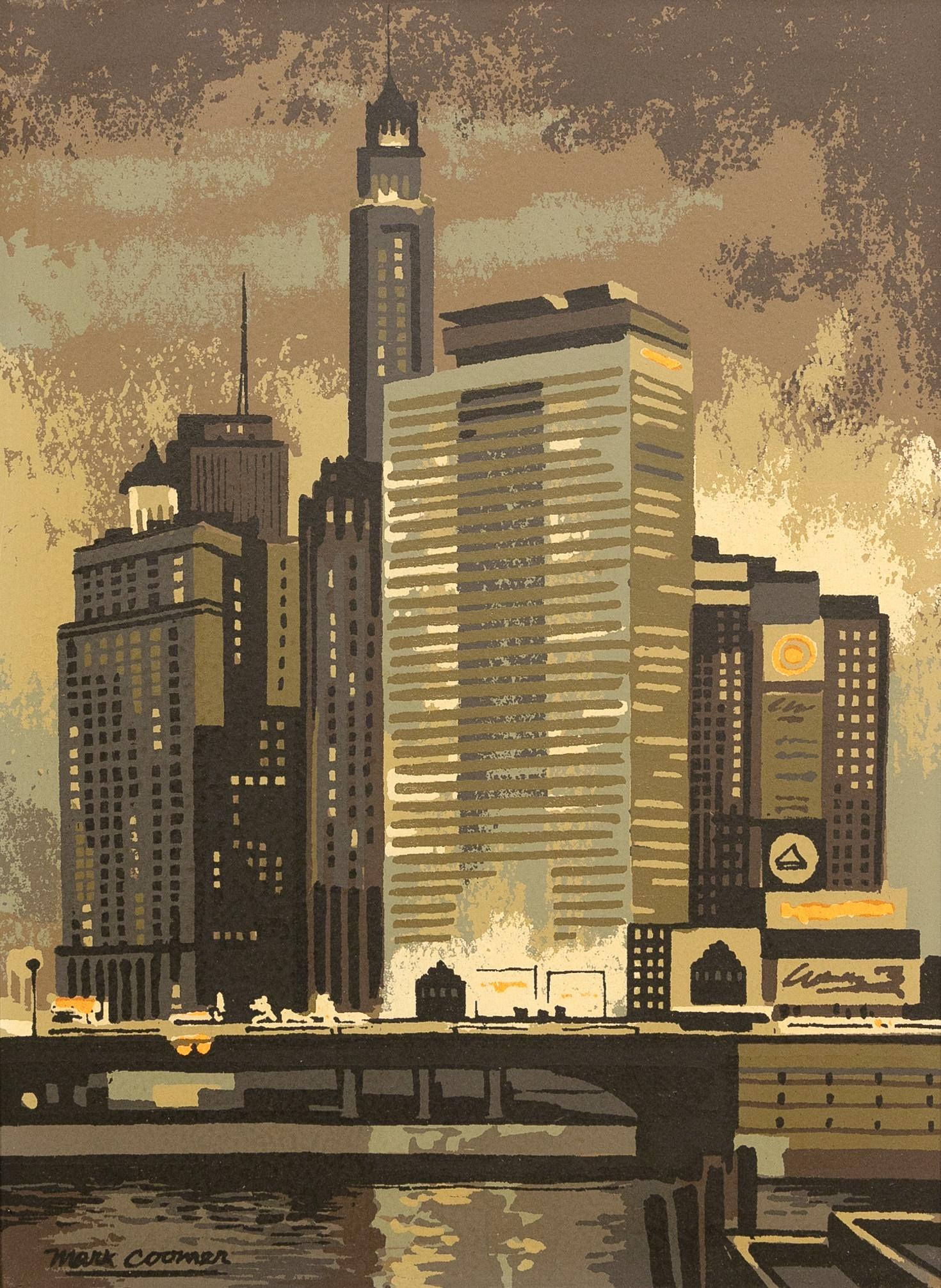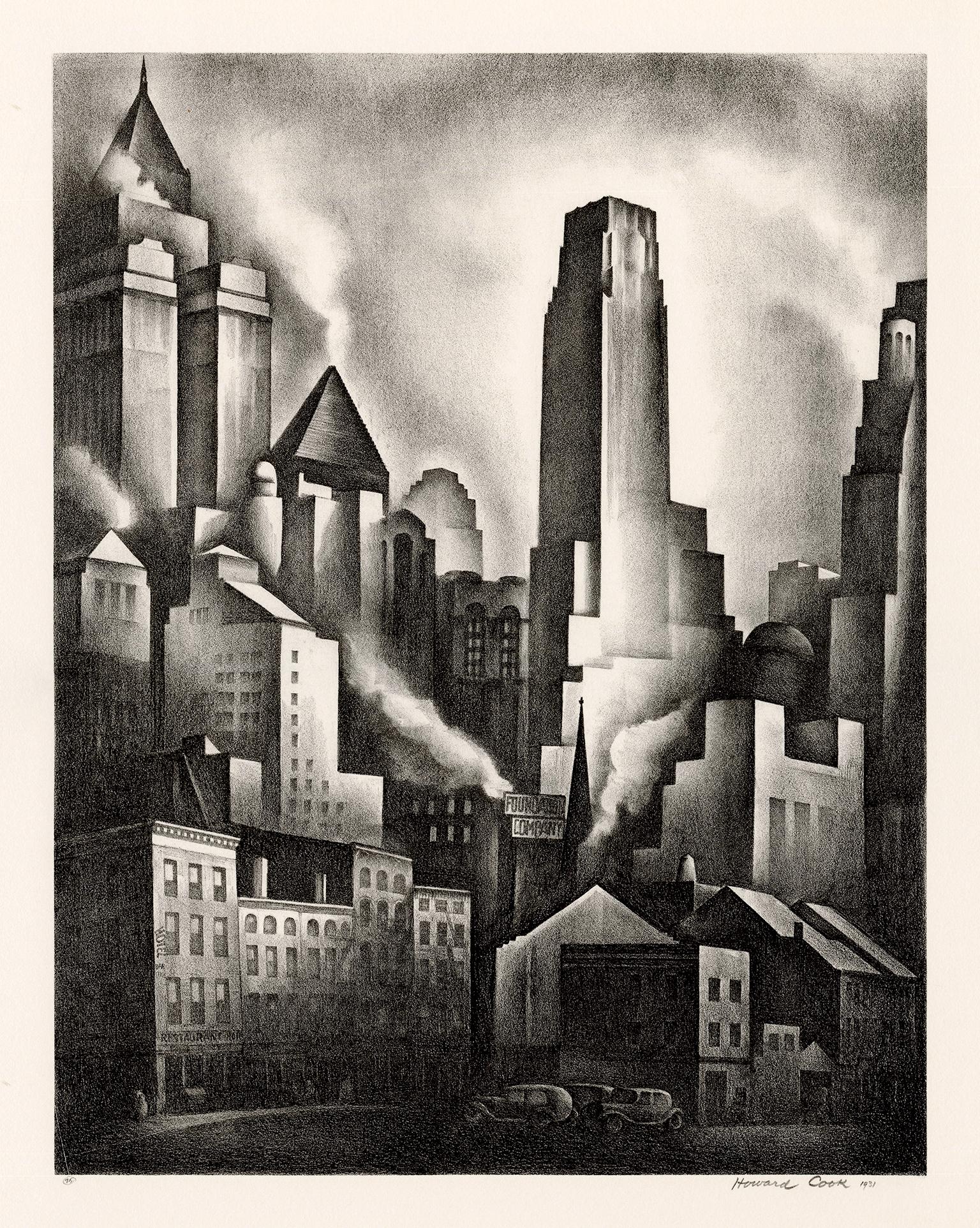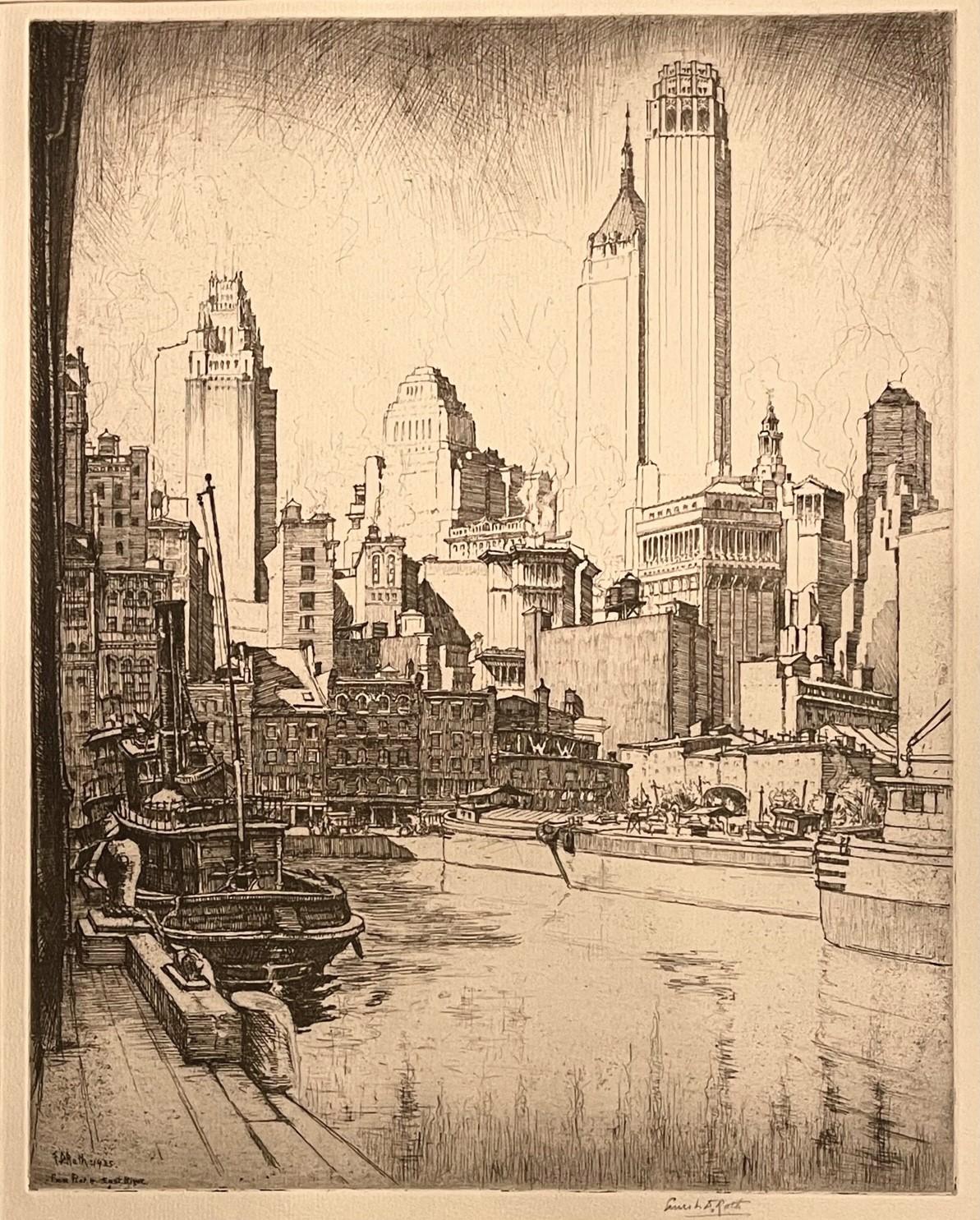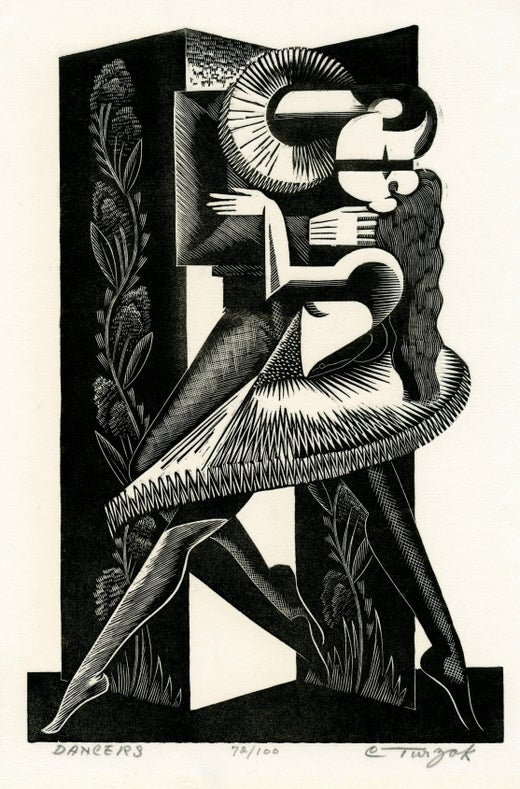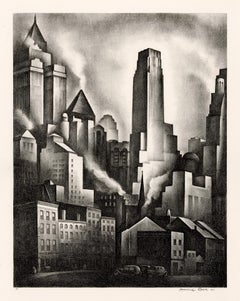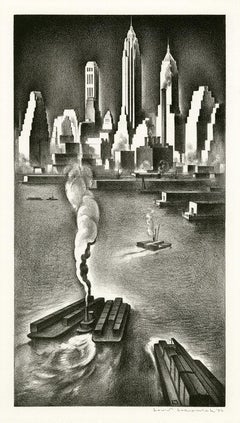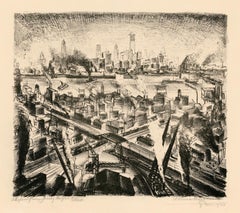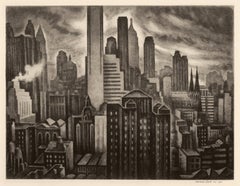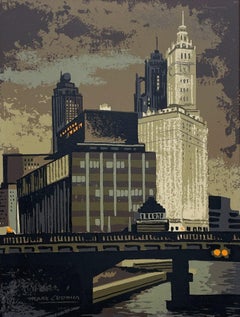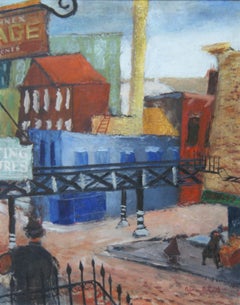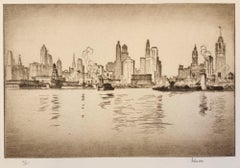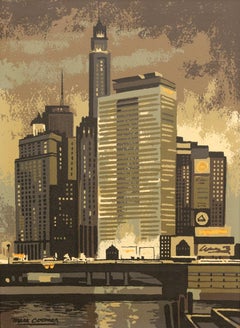Charles Turzak, 'North Bank of the Chicago River', color woodcut, c. 1935, edition 50. Signed and titled in pencil. A fine, richly-inked impression, with fresh colors, on cream wove Japan paper; the full sheet with margins (5/8 to 1 7/16 inches), in excellent condition. Matted to museum standards, unframed. Scarce.
Created by the artist for the Chicago Works Progress Administration (WPA).
Image size 9 x 12 inches (229 x 305 mm); sheet size 11 1/8 x 13 7/8 inches (283 x 337 mm).
Collections: Krannert Art Museum, University of Illinois; U. S. Library of Congress.
ABOUT THIS WORK
One of a series of four striking woodcuts Turzak created for the Works Progress Administration (WPA) entitled 'Chicago Moods'. This bold, cubist-inspired work reflects Turzak's affinity with the modernist art movements of the early 20th century, which he was exposed to in his European art study travels. The image depicts the monumental Merchandise Mart building in the background towering over Chicago's bustling river industry. The Merchandise Mart was completed for Marshall Field & Co. in 1930; the 4.2 million square foot building became the world's largest commercial building, representing Chicago as the most populous city and financial center of the U. S. Midwest.
ABOUT THE ARTIST
Charles Turzak, born in Streator, Illinois, was the third child and only son of Czechoslovakian immigrant parents. His coal miner father toiled long hours, leaving the boy with numerous household chores. Yet, amidst these responsibilities, Turzak found creative expression in the meticulous carving of miniature animals from peach seeds, a craft he would later sell for pennies.
Turzak learned woodworking from a neighbor, an English cabinet maker, and soon apprenticed for violin making. He drew cartoons for his school's yearbook and designed sale bills for local merchants. In 1920, he won a cartoon contest sponsored by the Purina Company in St. Louis, Missouri, which helped provide his tuition for the School of the Art Institute of Chicago. He excelled in drawing and woodcarving and gained membership in Delta Phi Delta, an honorary art fraternity. He supported himself through freelance advertising, selling insurance, and teaching woodcut and wood engraving classes at the Academy of Fine Arts.
By the late 1920s, Turzak had gained recognition through the exhibition and sale of his prints of Northwestern University and the iconic Chicago landmarks such as the Chicago Water Tower, Tribune Tower, and Buckingham Fountain, as well as his watercolors of steel mills, boats, harbors, skylines, woodlands, parks, and still life subjects. In 1929, he traveled to Europe to study the works of the masters firsthand, visiting England, Germany, Czechoslovakia, Austria, and France. His return to the United States coincided with the onset of the Great Depression, a period that would test his resilience and ingenuity.
Turzak was one of the early artists to participate in the Works Progress Administration (WPA) depression-era public art projects designed to employ out-of-work artists. Turzak painted murals for the Old Chicago Main Post Office and the post office in Lemont, Illinois. He produced a WPA-sponsored portfolio, History of Illinois in Woodcuts, in 1935—the acclaimed series of 10 prints helped establish him in an advertising career. During this period, Turzak also created woodcut biographies of notable Americans—his first edition on Abraham Lincoln sold so well at the Century of Progress International Exhibition (Chicago World’s Fair, 1933-34) that it supported him throughout the Depression. He followed it with 'Benjamin Franklin: A Biography in Woodcuts', accompanied by text written by his wife, Florence Turzak.
In 1942, Turzak became the art director of Today's Health Magazine while continuing to create his art. He moved to Orlando, Florida, in 1958, where he continued painting and experimenting with modernist genres and abstraction.
The Figge Art Museum mounted an exhibition of Turzak’s WPA-era graphics, ‘Beyond the Surface: WPA Works of Charles Turzak’, November 11, 2011- March 10, 2012.
Turzak’s graphic works are represented in numerous museum collections, including the Ackland Art Museum, Art Institute of Chicago, Cleveland Museum of Art, Columbus Museum of Art, Crystal Bridges Museum of Art, Figge Art Museum, Library of Congress, Metropolitan Museum of Art, National Gallery of Art, Philadelphia Museum of Art, Smithsonian American Art Museum, Spencer Museum of Art, Western Illinois University Art Gallery, and the Whitney Museum of American Art.
